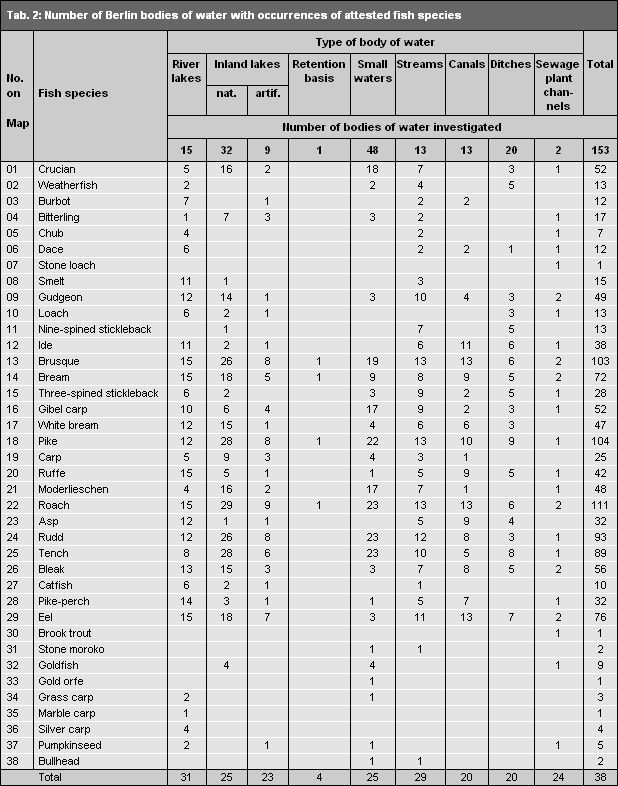During the recording period of 2003-2013, 38 species of fish were verified in the state of Berlin, including nine non-local species. Compared with 2003, the species inventory was expanded by five more species, of which four are neozoans (foreign species). These include the brook trout, the stone moroko, the pumpkinseed and the gold orfe. Moreover, the native stone loach, a species which had disappeared from the territory of the state of Berlin since 1920, was attested again for the first time in 2010 in the Berlin segment of the Neuenhagen Millstream (Erpe).
On the other hand, one non-indigenous species, the rainbow trout, can no longer be ascertained.
As in the 2004 edition, the systematics of European freshwater fish by Kottelat (1997) has been used here. Also used in the definition of non-indigenous species. As a result, the scientific species names of several fish species have been changed, by comparison with the last edition of the map. Besides this editorial change, the view of a species as not local (non-indigenous, neozoans) has been fundamentally changed. As the result of an international working group on Neozoans/ Neophytes, the year 1492, the official discovery of the "New World" by Columbus, has been established as the threshold year for the determination of a species as non-indigenous, since after this, the exchange processes of goods, commodities and also biota increased immensely between the continents. Species of fish naturalized after 1492 are regarded as non-indigenous, not local (Kinzelbach 1996, Kowarik 2003).
In contradiction to this, the Berlin State Fishing Regulation (LFischO Berlin) has, for purposes of simplification of economic stocking measures of the fish industry (abolition of approval requirements), established all species of fish naturalized since 1900 as native. With reference to finish stocking regulations, stocking of native fish species is legally subject to notification, and for non-native and nonindigenous species, authorization is required from the Subordinate Fishing Authority.
The species carp and gibel carp, which are economically significant in Berlin, particularly for fishermen, are no longer viewed as non-indigenous, as they were in the 1993 Edition, since they demonstrably settled the Elbe watershed area, including the Havel and Spree, between 530 and 1100 (Hoffmann 1994).

